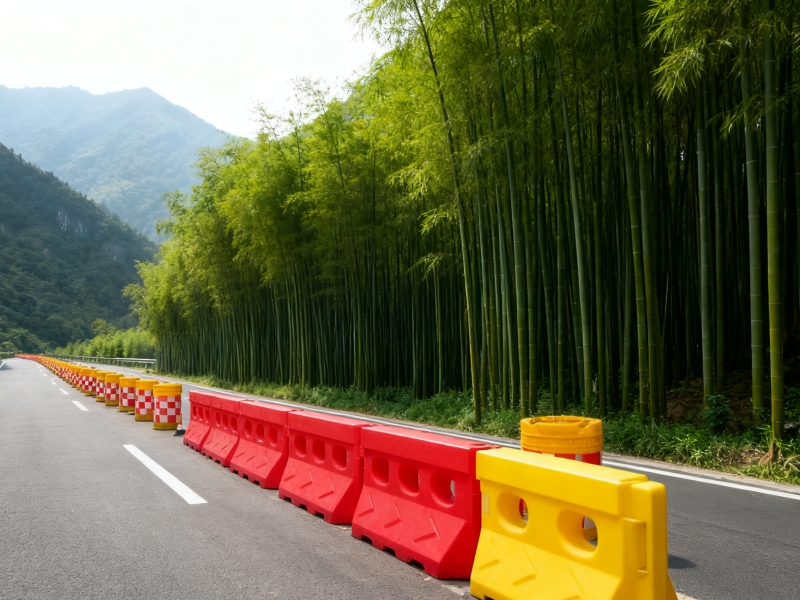A plastic traffic water filled barrier is a movable plastic barrier used in a variety of situations. In construction, it protects construction sites; in traffic, it helps control traffic and pedestrian flow; and it’s also seen at special public events, such as outdoor events or large-scale competitions. Furthermore, because water barriers are lightweight and easy to install, they’re often used as temporary fencing.
Made from PE using a blow-molded machine, water barriers are hollow and require filling with water. Their shape resembles a saddle, hence the name. Water barriers are those with holes on top for adding weight. Non-water-filled, movable wooden or iron barriers are called chevaux de frise. Some water barriers also have horizontal holes that allow them to be connected via rods to form longer chains or walls. Qixiang, a traffic facility manufacturer, believes that while wooden or iron barriers can certainly be used, water barrier fencing is more convenient and can adjust the weight of the barriers to suit specific circumstances. Water barriers are used to separate lanes on roads, at toll booths, and at intersections. They offer a cushioning effect, absorb strong impacts, and effectively reduce accident losses. They are commonly used in road traffic facilities and are commonly found on highways, urban roads, and at intersections with overpasses and streets.
Water barriers provide a significant safety warning for drivers. They can reduce casualties among both people and vehicles, providing a safer and more reliable protection measure. They are primarily used to prevent people from falling or climbing during various activities, enhancing safety. Water barriers are often installed in hazardous areas and along municipal road construction sites. During certain activities, temporary barriers and other locations are used to divide urban roads, isolate areas, divert traffic, provide guidance, or maintain public order.
How should water barriers be maintained on a daily basis?
1. Maintenance units should assign dedicated personnel to maintain and report the number of damaged water barriers daily.
2. Regularly clean the surface of water barriers to ensure that their reflective properties meet technical requirements.
3. If a water barrier is damaged or displaced by a vehicle, it should be replaced as soon as possible.
4. Avoid dragging during installation to avoid shortening the lifespan of the water barrier. The water inlet should face inward to prevent theft.
5. Increase the water pressure during water filling to shorten installation. Fill only to the surface of the water inlet. Alternatively, fill the water barrier one or more times at a time, depending on the construction period and site conditions. This method of filling will not affect the stability of the product.
6. The top of the water barrier can be affixed with slogans or reflective ribbons. You can also secure and connect various objects on the top of the product or with thickened self-locking cable ties. This small-scale installation will not affect the quality and performance of the product.
7. Water barrier enclosures that become torn, damaged, or leak during use can be repaired simply by heating with a 300-watt or 500-watt soldering iron.
As a traffic facility manufacturer, Qixiang strictly controls production and selects high-strength and environmentally friendly PE raw materials that are impact-resistant and aging-resistant. After high-temperature exposure and low-temperature severe cold tests, they can still maintain structural stability and are not prone to cracking and deformation. The one-piece molding process design has no splicing gaps, effectively avoiding water leakage and damage, and the service life of plastic traffic water filled barriers far exceeds the industry average.
Post time: Sep-29-2025







